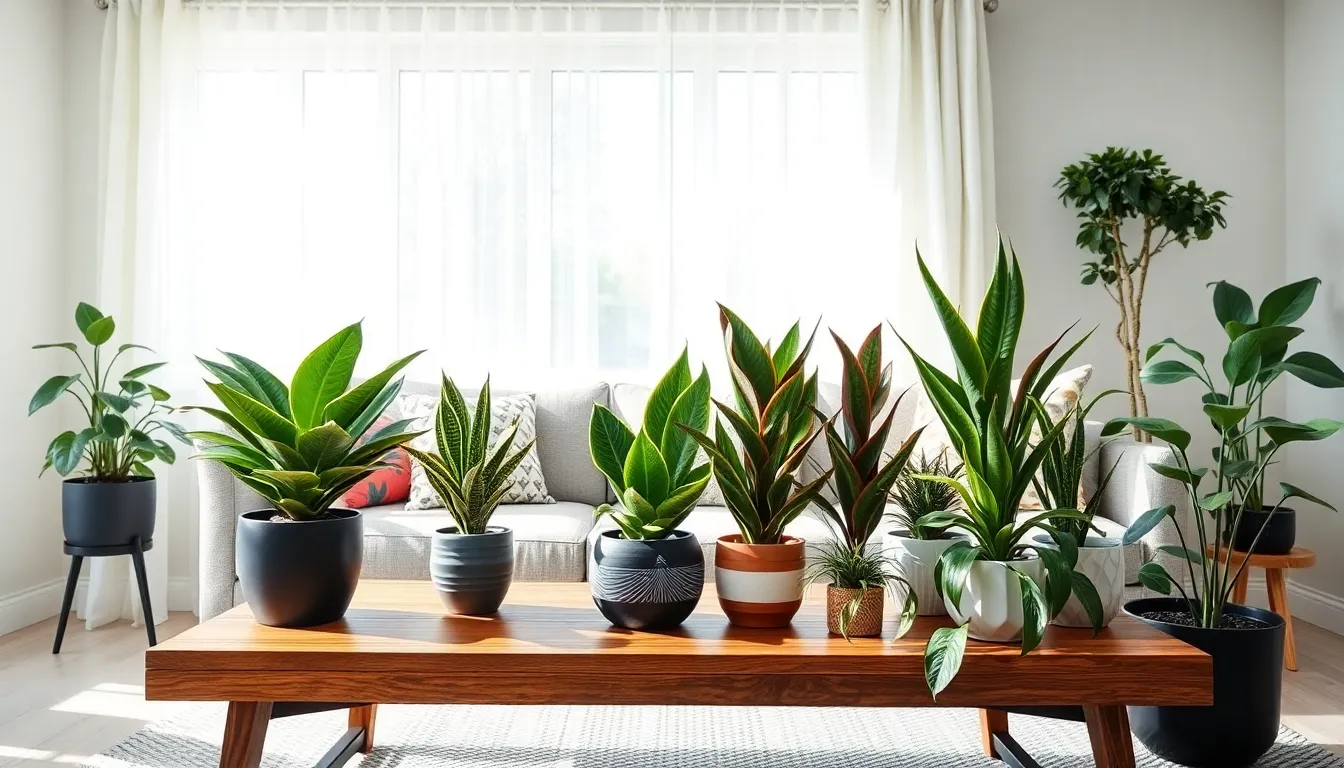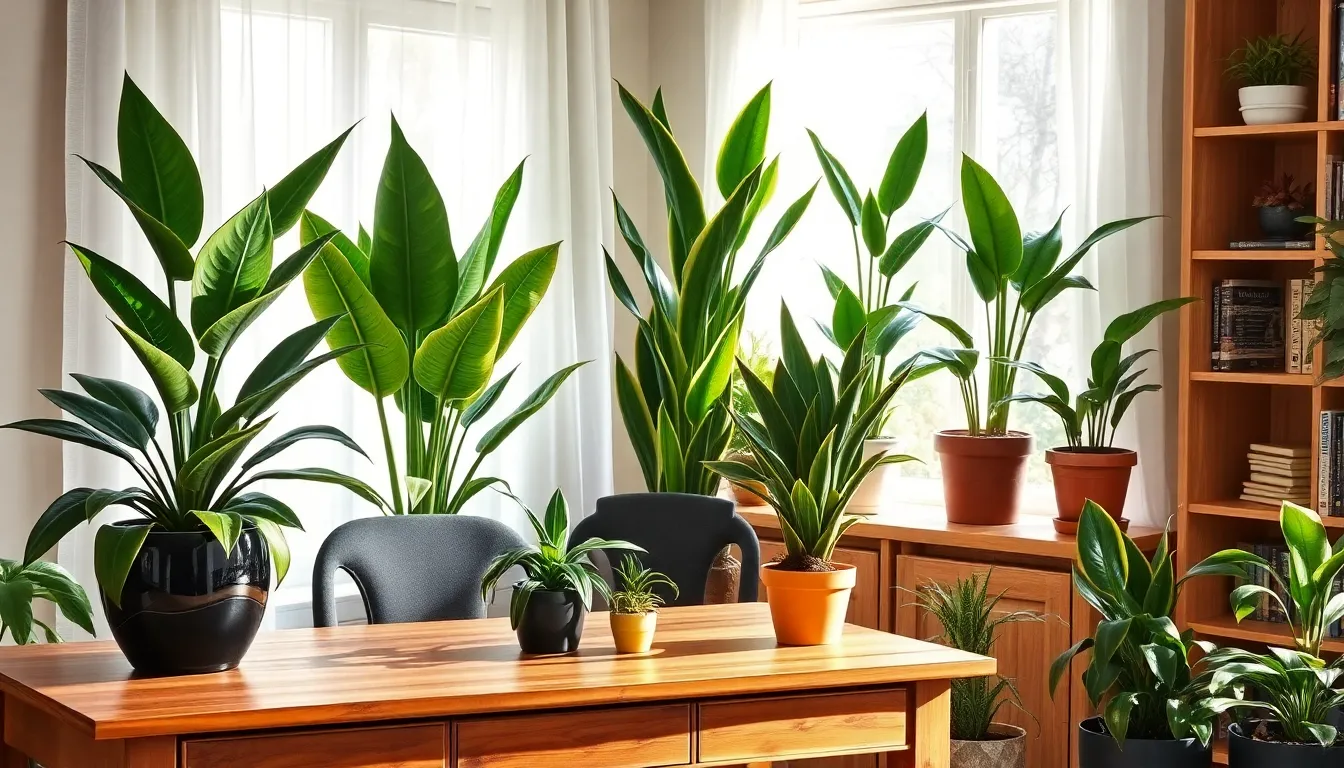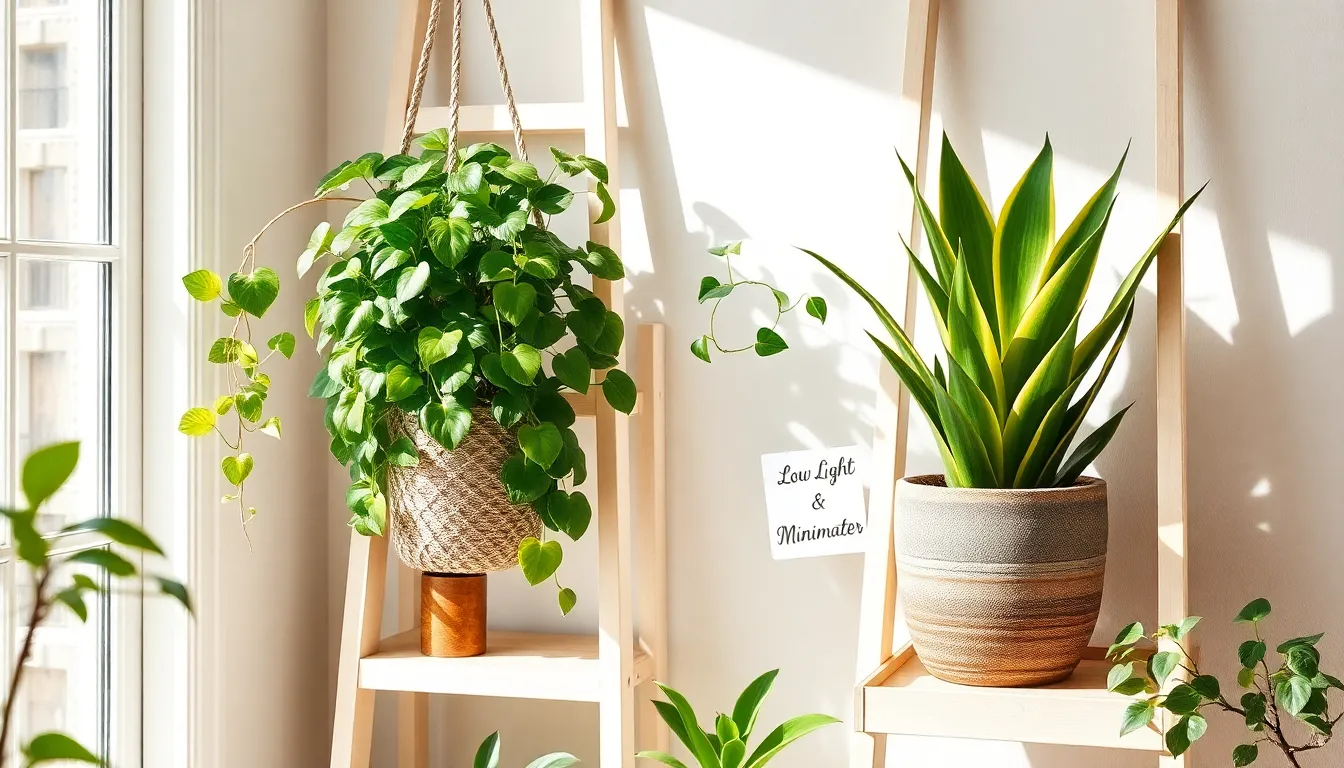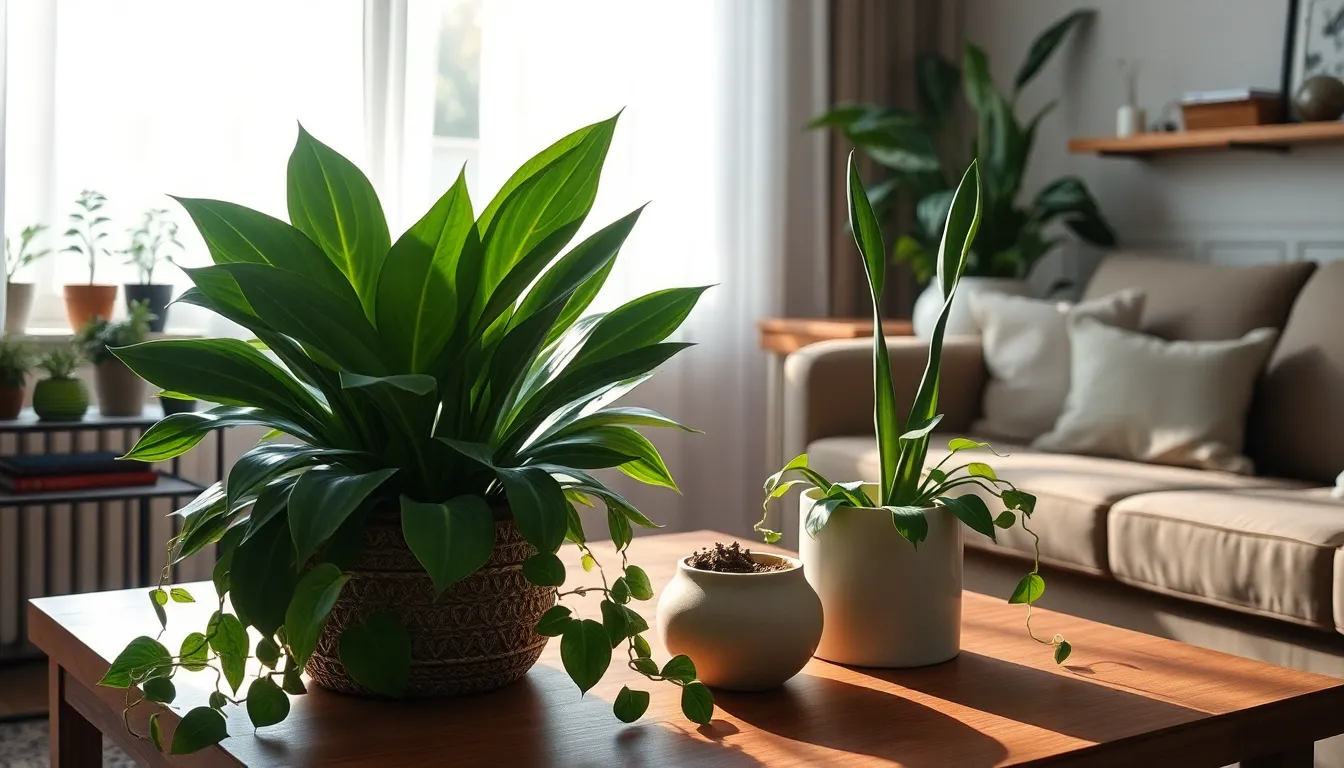In the heart of every home, there’s a space that begs for a touch of nature, yet doesn’t quite receive the sun’s embrace. Whether you’re a beginner just dipping your toes into the world of indoor gardening or a seasoned plant parent looking to diversify your collection, discovering plants that thrive in low-light conditions can transform even the shadiest corners into lush, green sanctuaries. The realm of indoor plants that require little sunlight is both fascinating and accessible, offering an opportunity to bring life to spaces otherwise considered inhospitable to greenery.
Understanding the importance of choosing the right plants for low-light environments can not only enhance your home’s aesthetic but also improve air quality and boost your mood. In this article, you will uncover a curated list of ten stunning indoor plants that flourish without the need for direct sunlight, making them ideal companions for your dimly lit rooms. You’ll learn about each plant’s unique characteristics and care requirements, empowering you to create a vibrant indoor garden that thrives on minimal light.
This guide is crafted with both novice and experienced gardeners in mind, ensuring that everyone can cultivate a successful indoor garden regardless of their level of expertise. Each plant featured here is not only beautiful but also resilient, offering a practical solution for those eager to embrace the joys of indoor gardening without the worry of inadequate sunlight. By the end of your reading journey, you’ll be equipped with the knowledge and confidence to select the perfect plants for your indoor spaces, transforming them into verdant oases that captivate and inspire.
Choosing Low-Light Indoor Plants
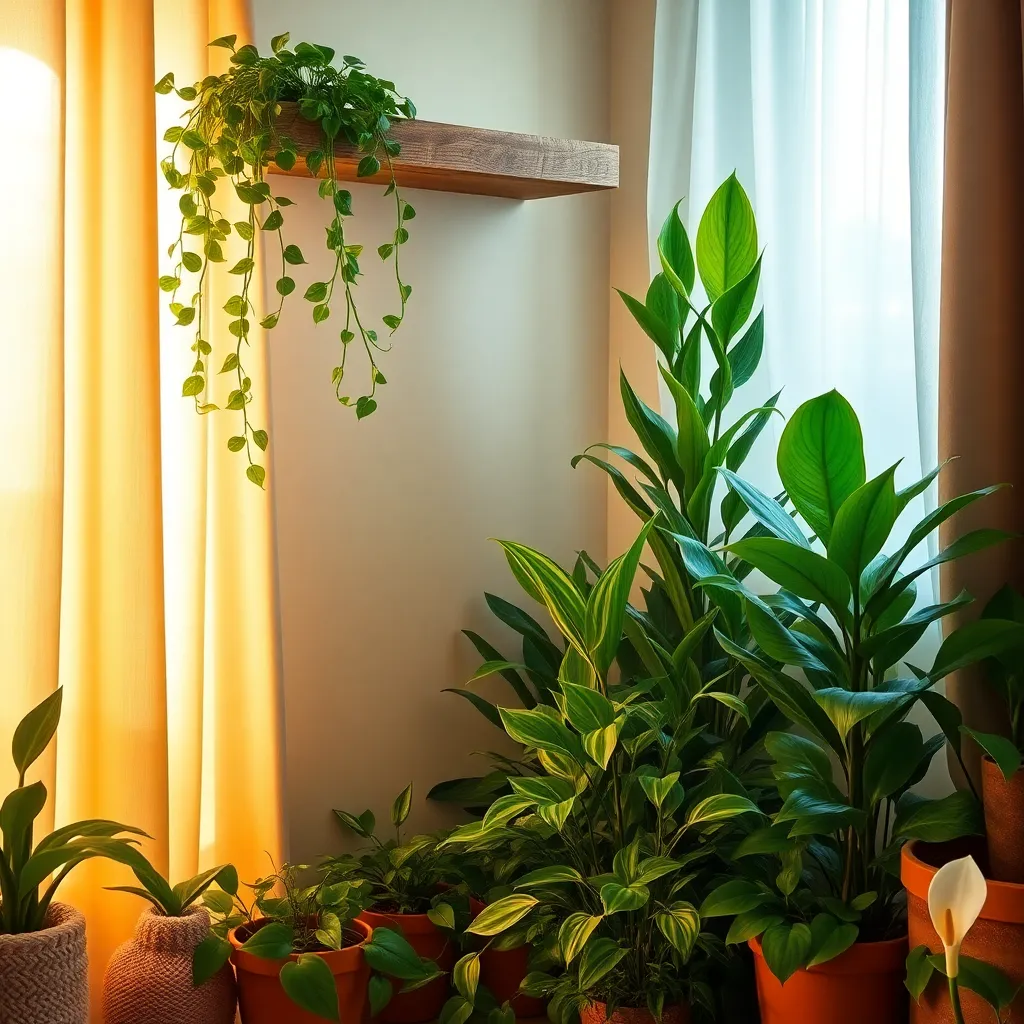
When selecting low-light indoor plants, it’s crucial to understand that these plants are adapted to thrive in indirect sunlight or shaded areas. They are ideal for spaces that receive little to no direct sunlight, such as rooms with north-facing windows or offices with artificial lighting.
Snake plants, also known as Sansevieria, are renowned for their resilience and ability to survive in low-light conditions. To care for a snake plant, use a well-draining potting mix and water it only when the soil is completely dry, typically every 2-3 weeks.
Another excellent choice is the ZZ plant, which is almost indestructible and perfect for beginners. It prefers to be slightly neglected, thriving with infrequent watering and only needing a drink roughly every 2-3 weeks, making it an excellent option for forgetful gardeners.
For a touch of color, consider the Peace Lily, which not only tolerates low light but also produces beautiful white blooms. Peace lilies prefer consistently moist soil but ensure proper drainage to avoid root rot, and mist the leaves occasionally to maintain humidity.
Benefits of Low-Light Houseplants
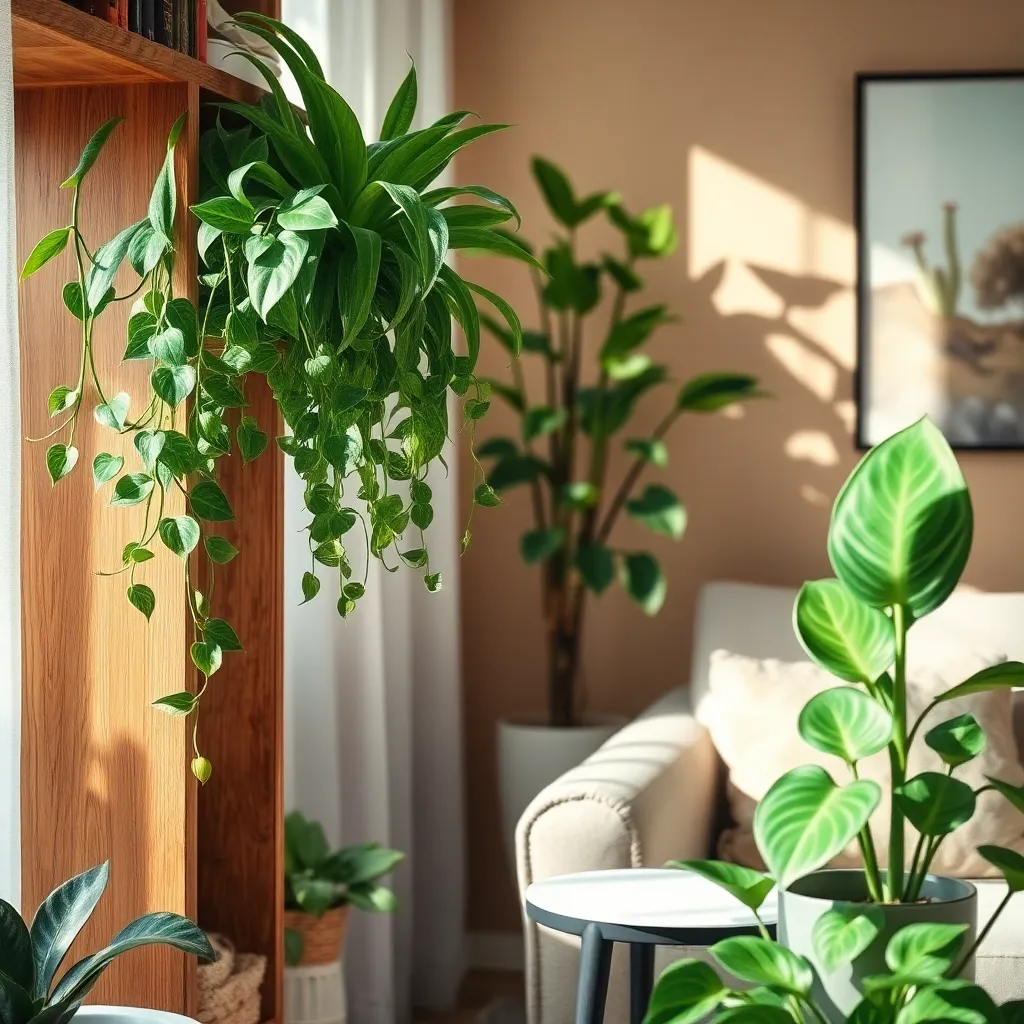
Low-light houseplants bring several benefits to your indoor gardening experience. They thrive in spaces where direct sunlight is scarce, making them perfect for apartments or rooms with fewer windows.
One major advantage is that these plants typically require less maintenance than their sun-loving counterparts. Watering needs are often reduced, as low-light plants generally prefer their soil to dry out more between waterings.
Incorporating low-light plants into your home can also improve air quality. Many of these plants, such as the snake plant and pothos, are known for their ability to filter toxins from the air, enhancing your living environment.
For those who travel frequently or have busy schedules, low-light plants are ideal companions. They are more forgiving if neglected for a short period, making them well-suited for beginners or busy individuals.
To maximize their growth, position them where they receive indirect light, like near a north-facing window. Use a potting mix that drains well, such as a blend of peat moss, perlite, and vermiculite, to ensure healthy root development.
Experiment with different low-light plants to find which ones thrive best in your home environment. Regularly dust their leaves to help them perform photosynthesis more efficiently, keeping them vibrant and healthy.
Peace Lily: A Shade Lover
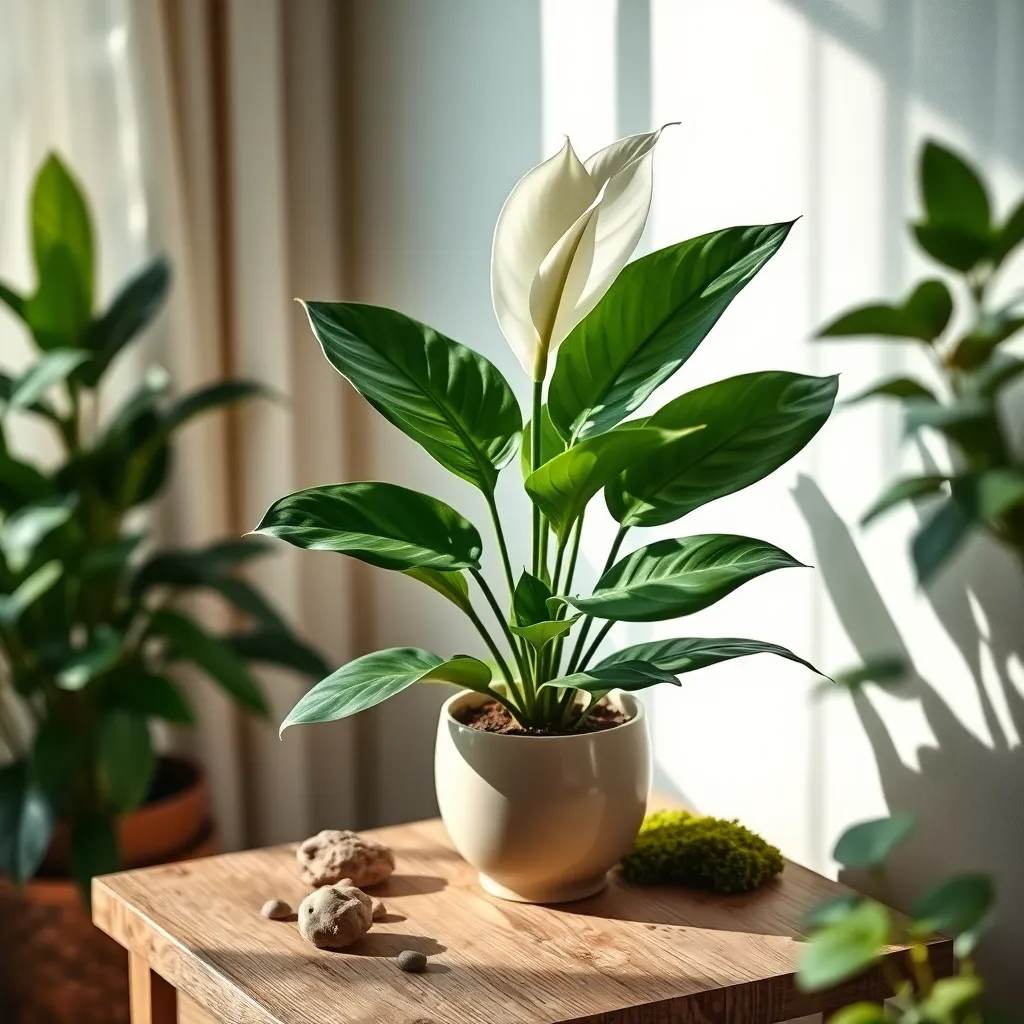
Peace lilies are perfect for indoor spaces with limited natural light, thriving in bright, indirect sunlight or even shade. These lush plants, known for their elegant white flowers and shiny green leaves, can brighten any corner of your home.
When it comes to watering, peace lilies prefer slightly moist soil but are forgiving if you occasionally forget. Aim to water them about once a week, ensuring the top inch of the soil feels dry before the next watering.
For optimal growth, use a well-draining potting mix, ideally a blend that includes peat moss, bark, and sand. Fertilize every 6 to 8 weeks with a balanced houseplant fertilizer during the growing season to keep your plant vibrant and healthy.
Advanced gardeners can try propagating peace lilies by division in spring. Gently separate the roots and repot the divisions in fresh soil, ensuring each has a few leaves and healthy roots.
Thriving Snake Plant Varieties
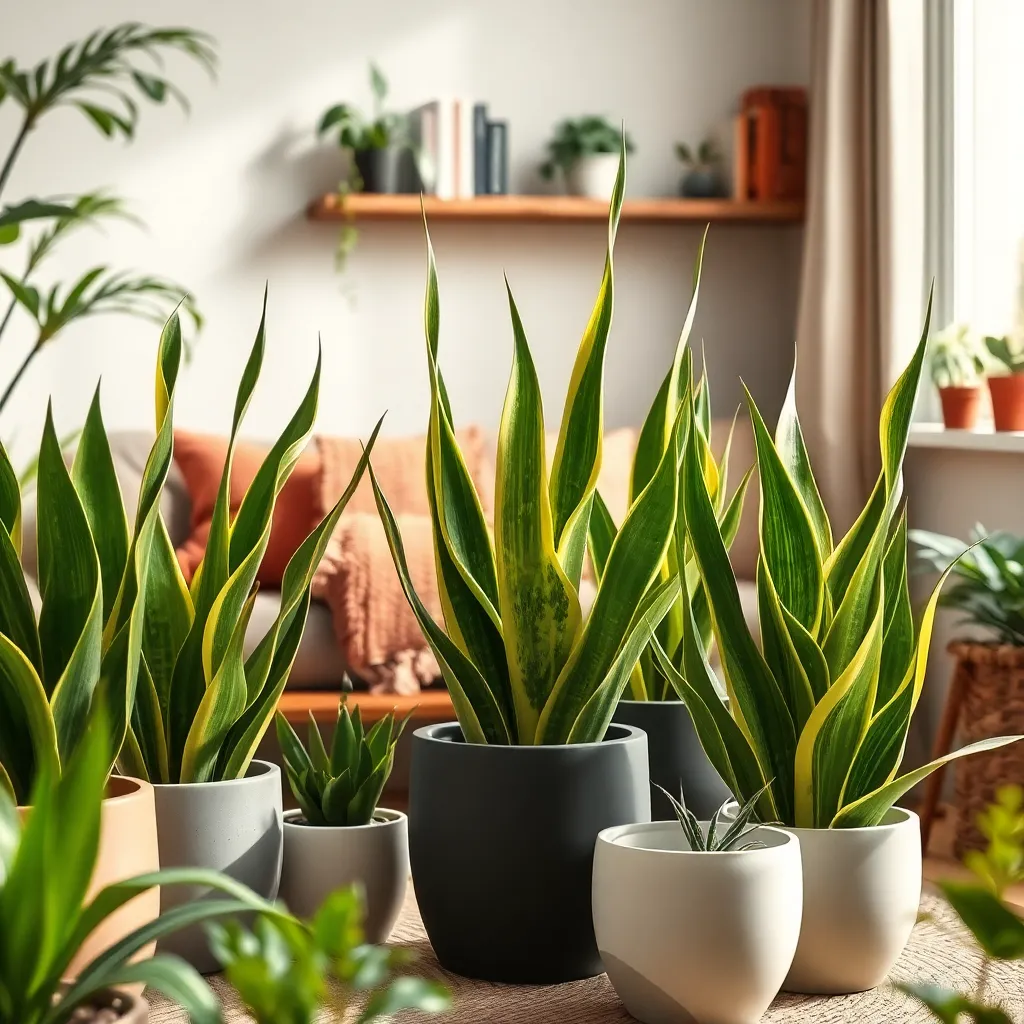
Snake plants, also known as Sansevieria, are excellent choices for low-light areas. These hardy plants can thrive in indirect sunlight and are ideal for beginners looking to add greenery to their homes.
Consistency is key when it comes to watering snake plants; they prefer to dry out completely between waterings. To ensure optimal growth, use a well-draining soil mix, like one designed for cacti or succulents, to prevent root rot.
For those seeking variety, the ‘Laurentii’ with its yellow-edged leaves offers a striking contrast to the classic deep green foliage. Meanwhile, the ‘Moonshine’ variety presents a paler, silver-green leaf, adding a unique touch to your collection.
Advanced gardeners might enjoy propagating snake plants from leaf cuttings. Simply cut a healthy leaf into sections, allow them to callous over, and plant them in a fresh, sandy mix to encourage new growth.
Zanzibar Gem: Minimal Care Required
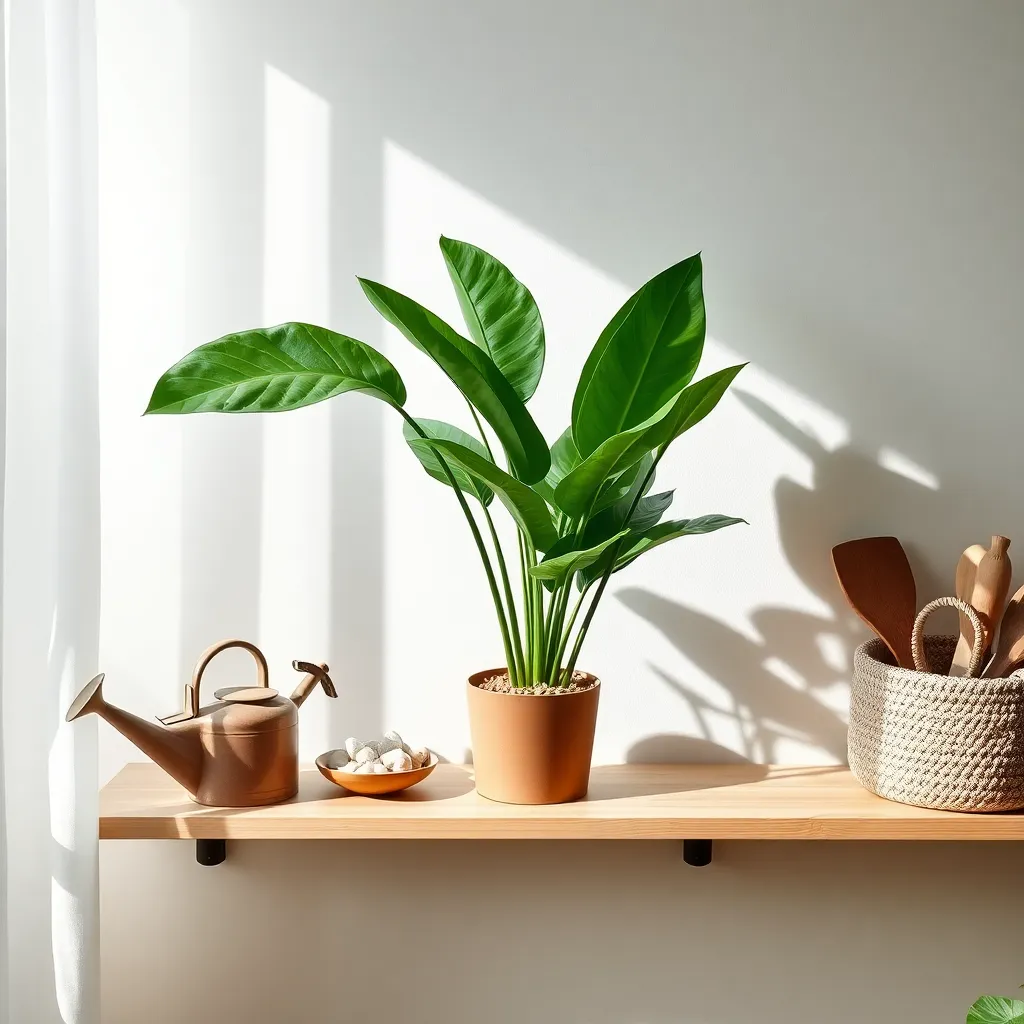
The Zanzibar Gem, also known as Zamioculcas zamiifolia, is a perfect choice for those seeking a low-maintenance indoor plant. Known for its ability to thrive in low light, it’s an ideal option for dimly lit rooms or offices.
Watering this plant is straightforward; it prefers to dry out completely between waterings. To avoid root rot, ensure the plant is in a pot with drainage holes and use a well-draining potting mix, such as a blend of regular potting soil with perlite.
For optimal growth, place your Zanzibar Gem in indirect light, though it can tolerate low-light conditions exceptionally well. Regularly dusting the leaves will help the plant photosynthesize efficiently, keeping its glossy appearance intact.
Fertilize sparingly, using a balanced liquid fertilizer diluted to half strength, applying it every two to three months during the growing season. As an advanced tip, consider repotting every two years to refresh the soil and provide ample space for growth.
Philodendron’s Low-Light Appeal
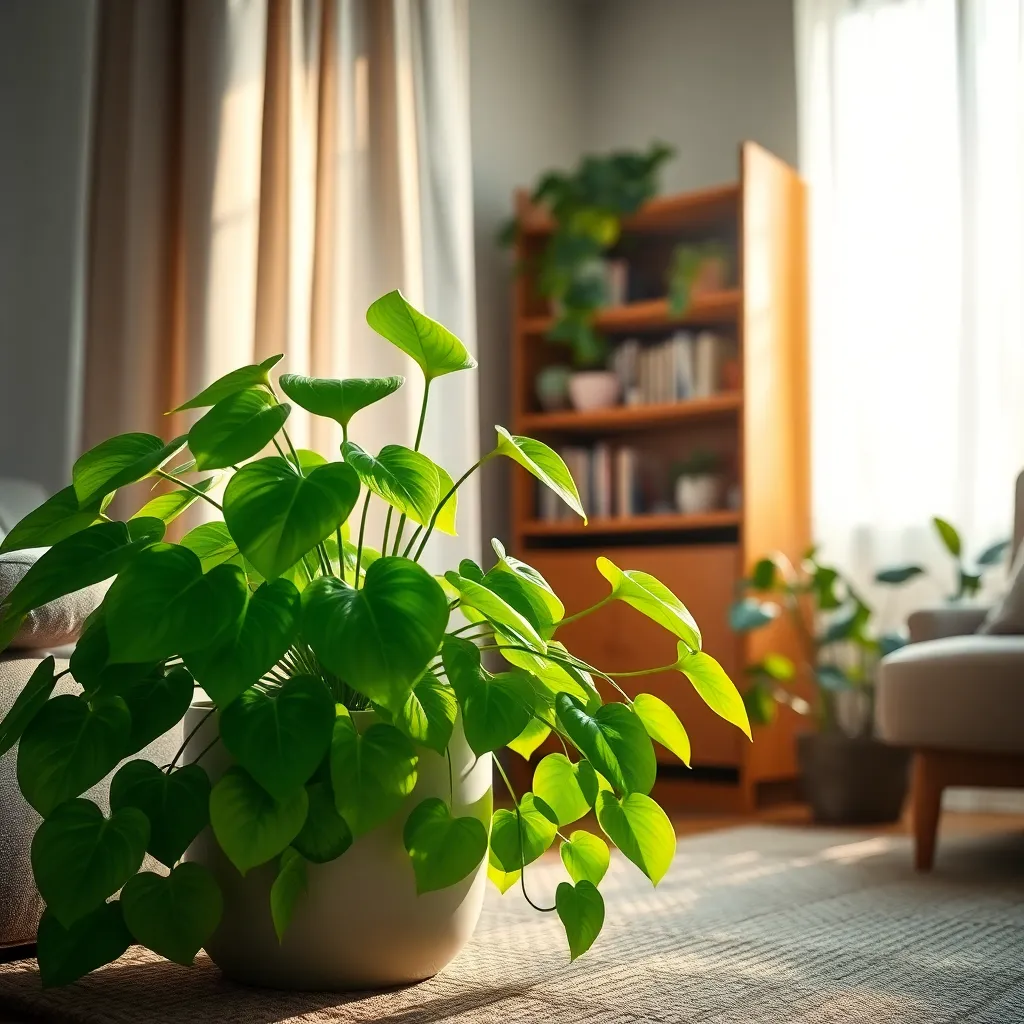
Philodendrons are renowned for their ability to thrive in low light, making them a perfect choice for dimly lit spaces in your home. These resilient plants can adapt to various lighting conditions, though they prefer indirect sunlight for optimal growth.
To keep your philodendron healthy, ensure it is planted in well-draining, nutrient-rich soil such as a peat-based mix. Watering should be done when the top inch of the soil feels dry, typically once every 1-2 weeks, to avoid root rot.
For those looking to enhance their philodendron’s growth, consider providing occasional feeding during the growing season with a balanced liquid fertilizer. Pruning is also beneficial to encourage bushier growth and remove any yellowing leaves.
Beginners will appreciate the low-maintenance nature of philodendrons, while experienced gardeners can experiment with propagation through stem cuttings. These cuttings can be placed in water or directly into soil, allowing you to expand your indoor garden effortlessly.
Pothos: The Adaptable Climber
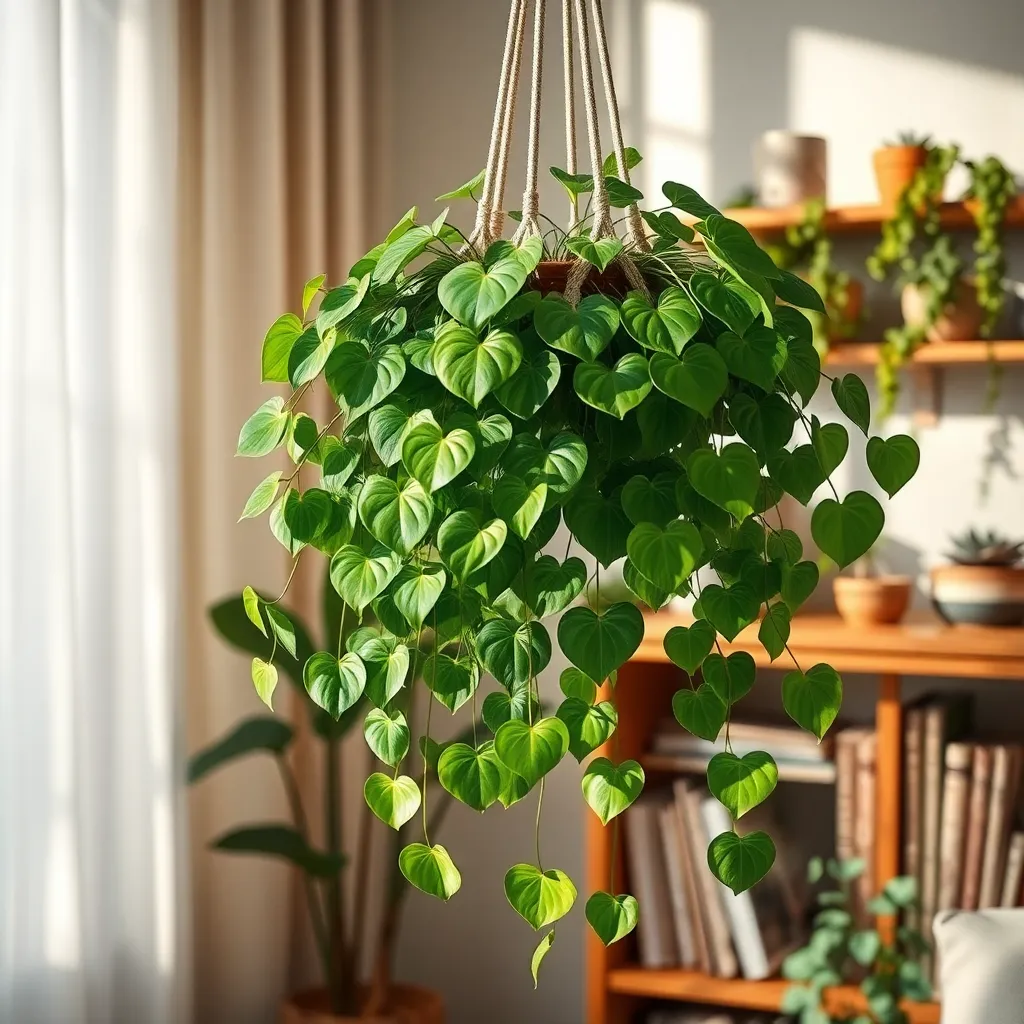
Pothos, often dubbed the ‘Devil’s Ivy’, is a versatile plant that thrives even in low-light conditions. Known for its vining nature, it can be trained to climb a trellis or cascade from a hanging basket, making it a great choice for adding vertical interest to your indoor space.
To keep your Pothos healthy, use a well-draining potting mix, such as a combination of peat moss and perlite. Water your Pothos when the top inch of soil feels dry to the touch, ensuring that the plant is not left sitting in water, which can lead to root rot.
Fertilizing your Pothos every 4-6 weeks during the growing season will promote lush growth. Use a balanced, water-soluble fertilizer at half the recommended strength, as Pothos is not a heavy feeder and can be sensitive to over-fertilization.
For those looking to propagate, Pothos is remarkably easy to multiply through cuttings. Simply take a stem cutting with a few leaves and place it in water or moist soil, and in a few weeks, you’ll notice new roots developing, making it an excellent plant for beginners to experiment with propagation.
Cast Iron Plant’s Durability
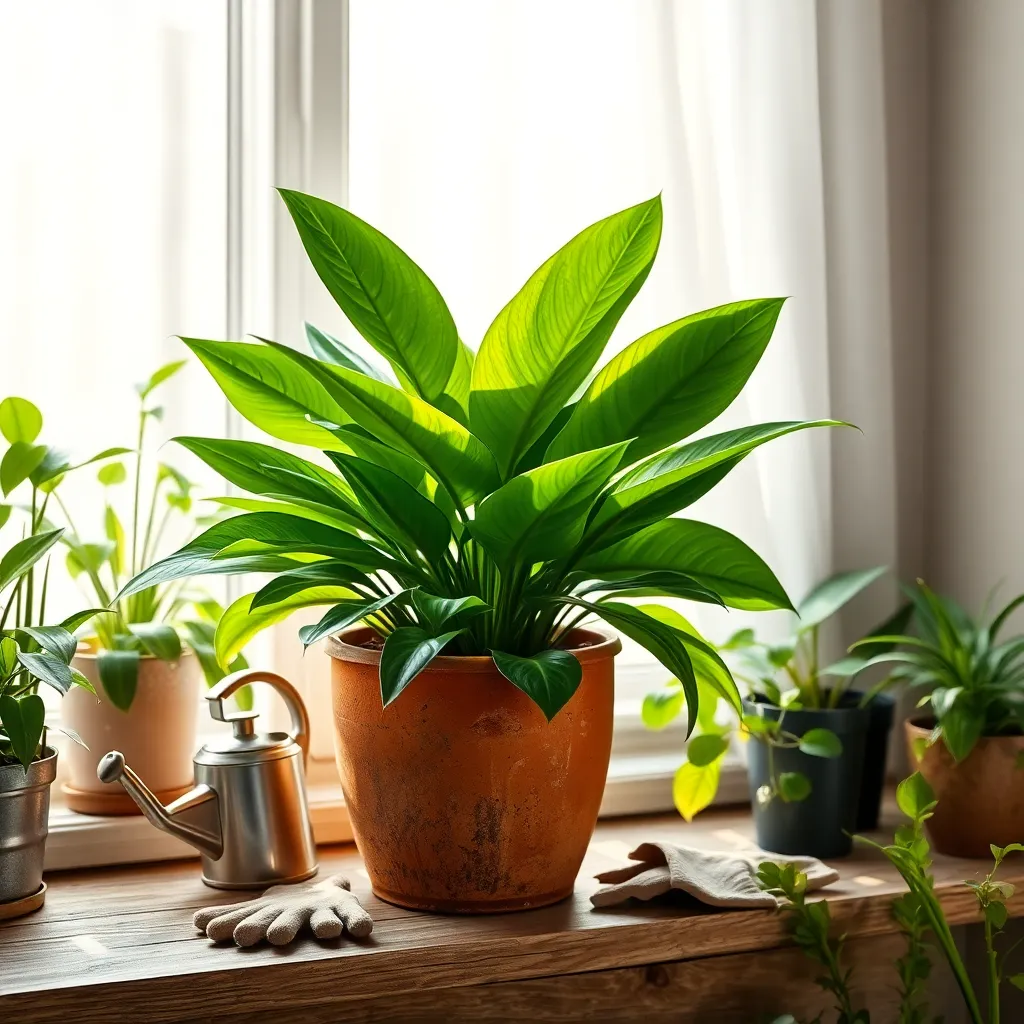
Known for its resilience, the Cast Iron Plant is a favorite among gardeners who desire a virtually indestructible houseplant. This plant thrives in low-light conditions, making it an ideal choice for dim corners and rooms with minimal sunlight.
One of the best aspects of the Cast Iron Plant is its tolerance to a wide range of growing conditions. It can endure neglect and still maintain its glossy, dark green leaves, so even novice gardeners can achieve success.
To care for your Cast Iron Plant, ensure it is planted in a well-draining potting mix, such as a combination of regular potting soil and perlite. Water the plant sparingly, allowing the soil to dry out between waterings to prevent root rot.
For more advanced plant enthusiasts, consider fertilizing the Cast Iron Plant every few months with a balanced, slow-release fertilizer to promote optimal growth. Additionally, wiping the leaves occasionally with a damp cloth will keep them dust-free and allow for better photosynthesis.
Bromeliads: Color in Dim Spaces
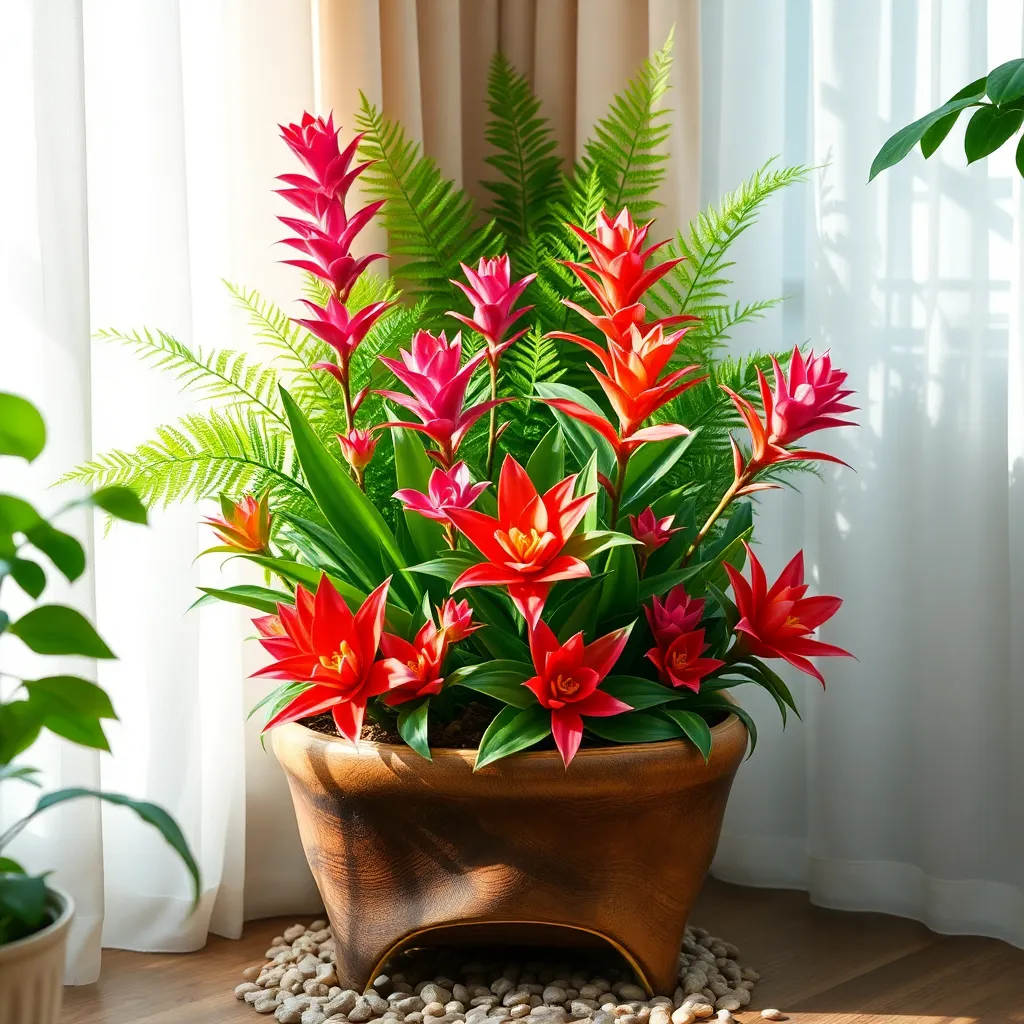
Bromeliads are a wonderful choice for bringing vibrant color into low-light indoor spaces. These tropical plants are known for their striking foliage and unique ability to thrive with minimal sunlight, making them perfect for dim corners.
Position your bromeliad where it can receive bright, indirect light; however, it can tolerate lower light conditions if necessary. Ensure the plant is potted in a well-draining mix, such as an orchid or cactus soil blend, to prevent root rot.
Water your bromeliad by filling its central cup with water, but avoid letting it sit in stagnant water for extended periods. It’s essential to empty and refresh the water frequently to prevent issues like algae buildup.
For added vibrancy, consider misting your bromeliad occasionally to mimic its natural humid environment. Advanced gardeners might also use a diluted liquid fertilizer in the growing season, applied directly to the central cup, to promote robust growth.
Caring for Indoor Ferns
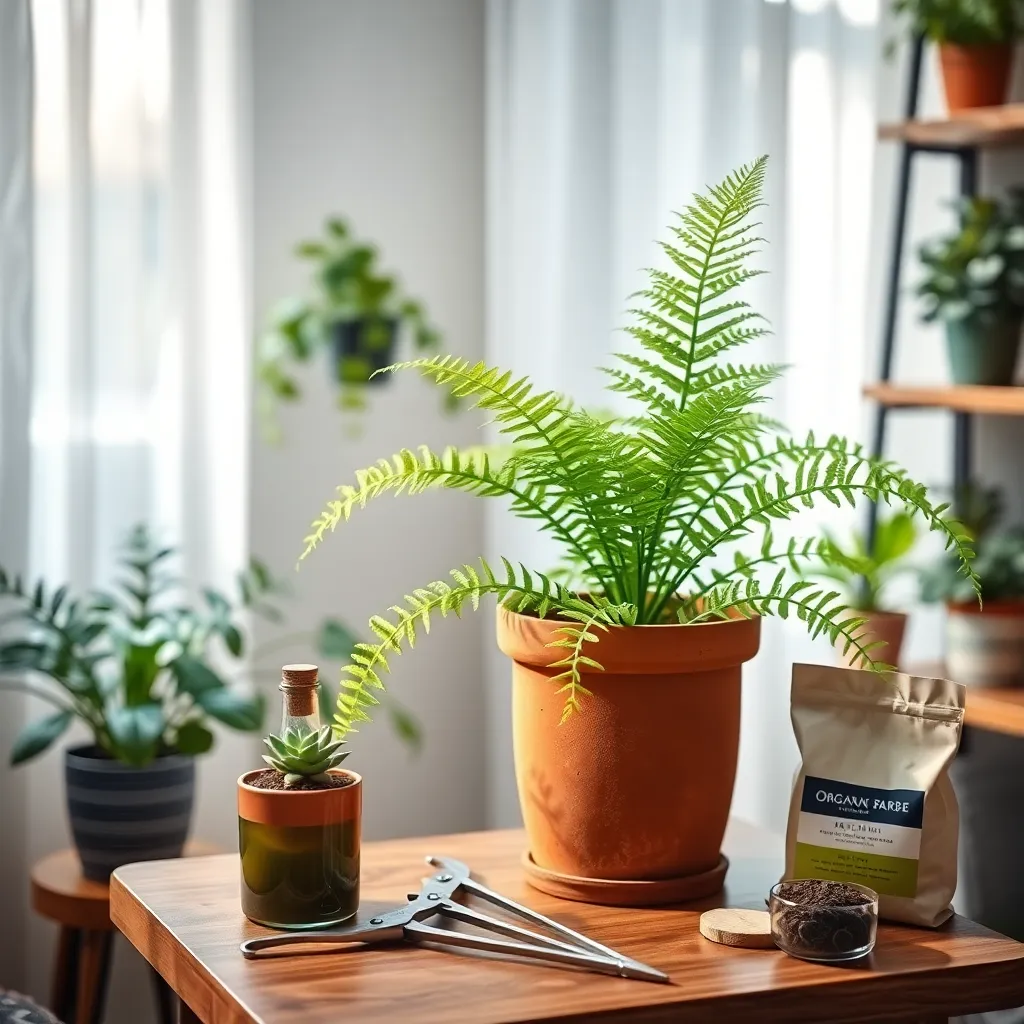
Ferns are a great choice for adding lush greenery to indoor spaces with low light. They thrive in shaded areas, making them perfect companions for rooms that receive indirect sunlight.
To keep your indoor ferns healthy, it’s essential to maintain high humidity levels. Regular misting or placing a humidifier nearby can mimic their natural tropical environment, promoting lush growth.
These plants prefer well-draining soil that remains slightly moist but not soggy. Use a potting mix specifically designed for ferns or a blend of peat moss, pine bark, and perlite to ensure proper drainage and aeration.
Water your ferns when the top inch of soil feels dry to the touch. However, avoid overwatering, as this can lead to root rot—a common issue with indoor ferns.
Advanced gardeners can occasionally fertilize their ferns during the growing season. Use a diluted balanced liquid fertilizer once a month to provide essential nutrients without overwhelming the plant.
Conclusion: Growing Success with These Plants
As we’ve explored the world of indoor plants that thrive with minimal sunlight, we’ve uncovered ten key concepts that can enhance not only your living space but also your relationships. From the resilient Snake Plant to the adaptable Pothos, each plant teaches us about the importance of adaptability, resilience, nurturing, and growth—qualities that are equally vital in our relationships. Just as these plants offer a breath of fresh air, cultivating these traits can rejuvenate the bonds we share with loved ones.
As an actionable step, why not choose one plant from the list to bring into your home this week? Let it serve as a daily reminder of the strengths you aim to cultivate in your relationships.
Don’t forget to save or bookmark this article as a handy guide for when you need a quick refresher on nurturing both greenery and connections. Remember, successful relationships, like thriving plants, require consistent care and attention. By embracing these lessons from nature, you’re well on your way to fostering deeper, more fulfilling connections. Here’s to a future where your relationships can flourish in the shade or the sunlight, just like these beautiful plants.

